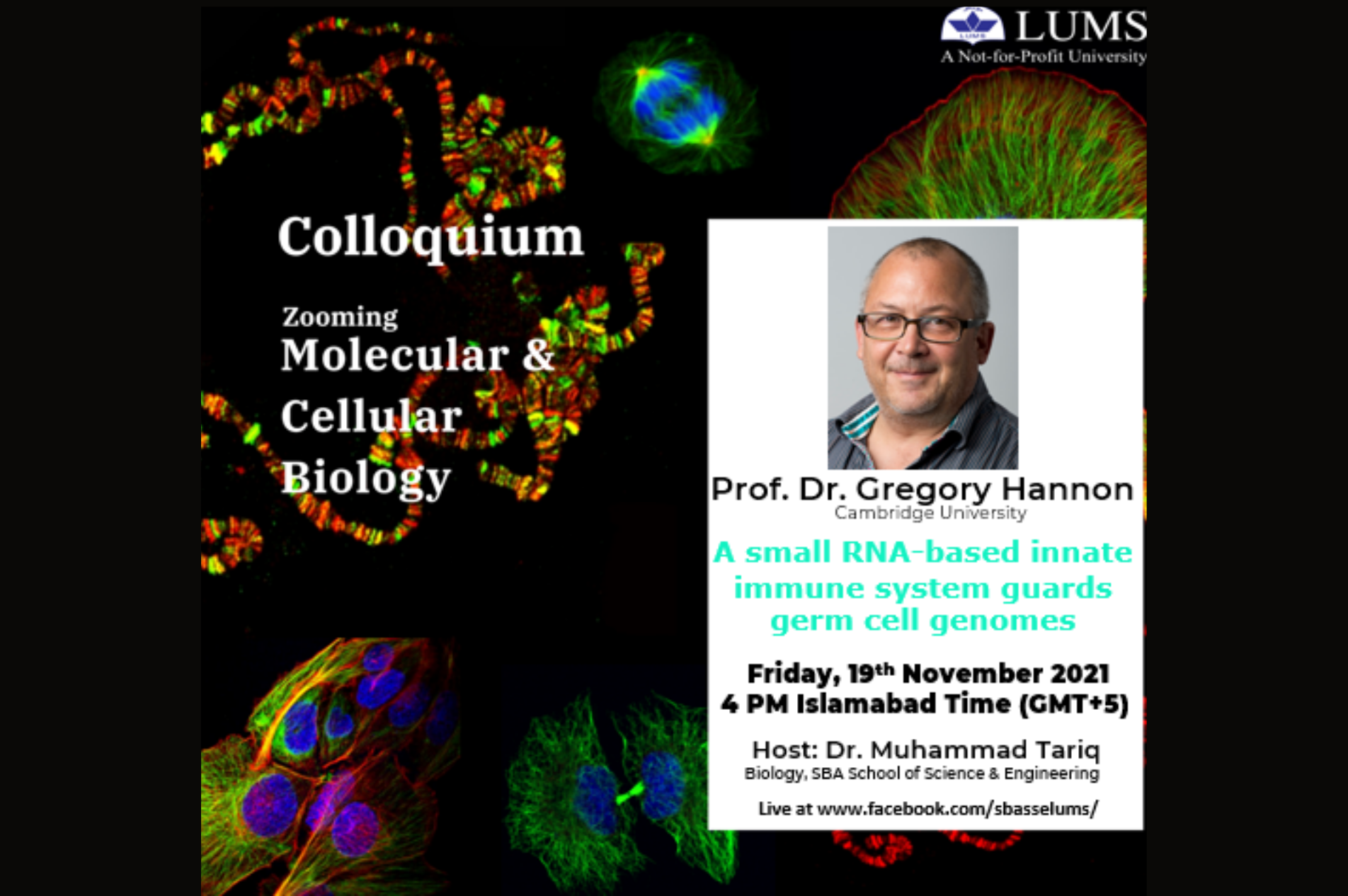
A Small RNA-Based Innate Immune System Guards the Integrity of Germ Cell Genomes
Professor Dr. Gregory Hannon is our next guest in the zooming Molecular and Cellular Biology Colloquium Series which is a regular feature by the Department of Biology at SBASSE.
For those who are interested in life sciences, this is going to be an exciting talk.
About the speaker:
Greg Hannon FRS FMedSci is a professor of molecular cancer biology and director of the Cancer Research UK, Cambridge Research Institute at the University of Cambridge. Professor Hannon is internationally recognized for his contributions to small RNA biology, cancer biology, and mammalian genomics. He has a long history in the discovery of cancer genes, beginning with work at CSHL that led to the identification of CDK inhibitors and their links to cancer. More recently, his work has focused on small RNA biology, which led to an understanding of the biochemical mechanisms and biological functions of RNAi. Building upon this foundation, he has developed widely used tools and strategies for manipulation of gene expression in mammalian cells and animals and has generated genome-wide shRNA libraries that are available to the cancer community. He was among the first to uncover roles for microRNAs in cancer, including the discovery of the miR-17-92 cluster as an oncogene, the placement of miR-34 within the p53 pathways, and the understanding that let-7 and miR-93 are critical regulators of both normal stem cells and tumor initiating cells in several tissues. His laboratory also discovered the piRNA pathway and linked this to transposon repression and the protection of germ cell genomes. He has a continuous history of collaboration and technological innovation, including the development of selective re-sequencing strategies that are now being used within TCGA and the 1000 Genomes project.

